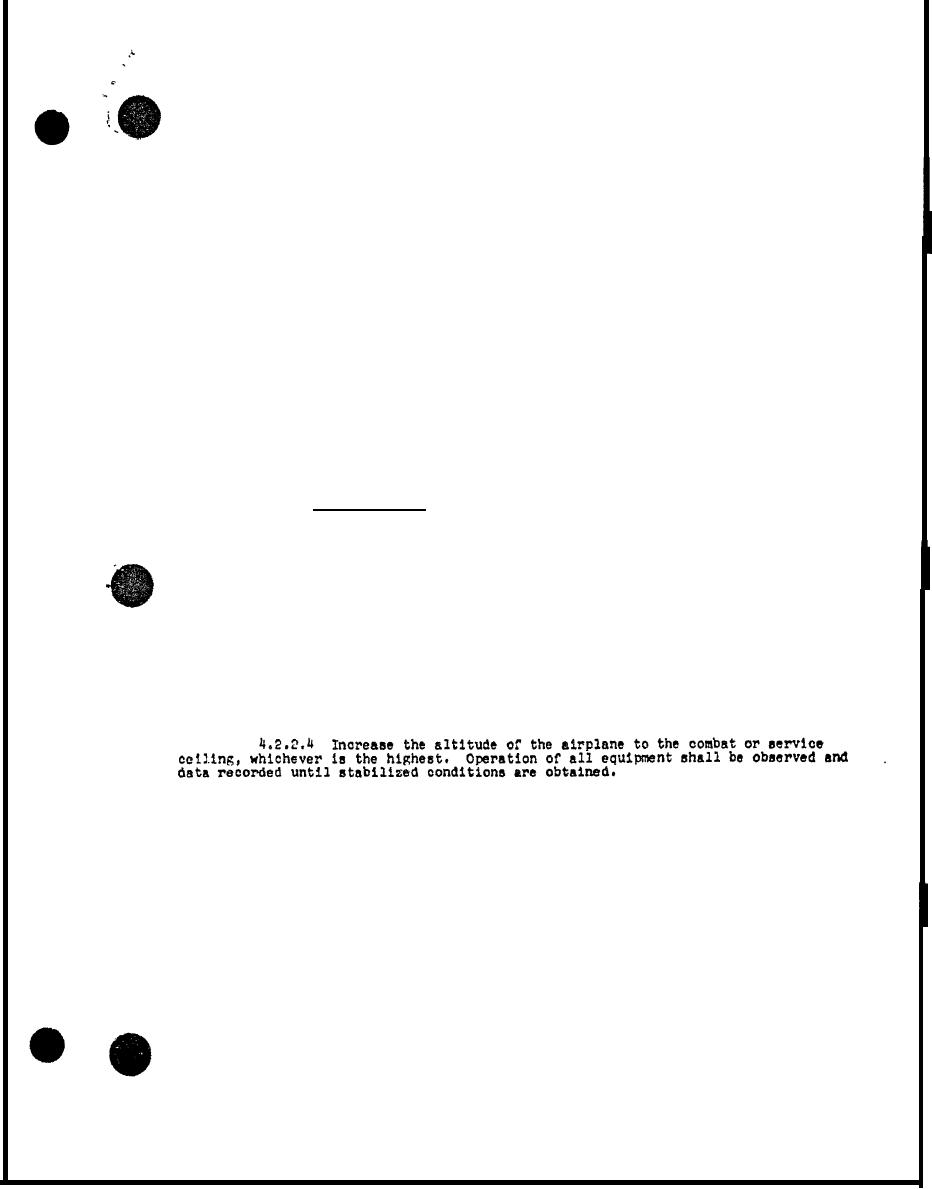 |
|||
|
|
|||
| ||||||||||
|
|  MIL-T-18606(Aer)
ing system in normal operation and secondiy with the auxiliary ram air system in use.
4.2.1.3 The time required to dump cabin pressure shall be determined at
several altitudes. Data showing the rate of pressure decay after actuation of the .
cabin safety valve shall be presented for each altitude investigated. These tests
shall be conducted with maximum airflow entering the cabin from the conditioning
system.
4.2.1.4 Operation of the cabin safety valve with regard to the prevention of .
excess positive and negative pressures within the cabin shall be thoroughly investi-
gated.
4.2.3.5 It shall be demonstrated that faliure of the POWer source used for
the temperature control and air flow control system components shall cause no hazard to
the crew or passengers or affect safety of flight.
4.2,2.6 The safe operation of air locks in pressurized aircraft shall be
satisfactorily demonstrated Pressure changes during decompression and recompression
cycles shall be recorded.
4.2.2.7 In aircraft containing two or more pressurized compartment, it
shall be demonstrated that the pressurization system will not create a hazard to
personnel or an unsafe condition in the airplane if there is a loss of pressure in any
one compartment,
4.2.2 Performance tests.- The following tests shall be conducted, in
addition to any others deemed necessary, to demonstrate satisfactory performance of the
cabin pressurizing and air conditioning system, During all test flights the cabin
shall be observed for contamination and any occurrence shall be described in detail.
controls for the system shall be set as required for optimum performance, however, the
exact use made of' the controls during the flights shall, be described in detail. Test
data shall be recorded as specified in section 3.
4.2.2.1 Take-off and accomplish a maximum-power climb to the normal cruise
altitude. Data should be recorded beginning with the start of the take-off run.
4.2.2.2 Ply at normal cruise altitude with appropriate engine power settings
until temperature, conditions within the cabin reach stabilization,
4.2.2.3 Determine the effect of changing the setting of the temperature
control to points above and below the design setting. Record data until stabiliation
is obtained.
4.2.2.5 Descend the airplane at the maximum permissible rate to the minimum
safe altitude and fly at this altitude until stabilized conditions within the cabin are
obtained. Data shall be recorded at sufficient Intervals to permit an accurate
evaluation of the performance of' all equipment~
4.2,2,6 Under the most critical combination of altitude and-speed; record ,
data to show that the capacity and performance of the heating system is satisfactory.
Demonstrate that the capacity of the heating system is adequate during a descent made
with minimum engine power settings.
4.2.2.7 Under the most critical combination of altitude and speed, record
data to show that the capacity of the cabin ventilating system is satsfactory. On
prossurlzed aircraft, this test applies to the auxillary ram air ventilation system.
4.2.2.8 Under the most critical combination of altitude and speed, obtain
data to show that the capacity of the cooling system is adequate.
4.2.2.9 This test applies only to VF type aircraft. At the altitude where
.
5
|
|
Privacy Statement - Press Release - Copyright Information. - Contact Us |